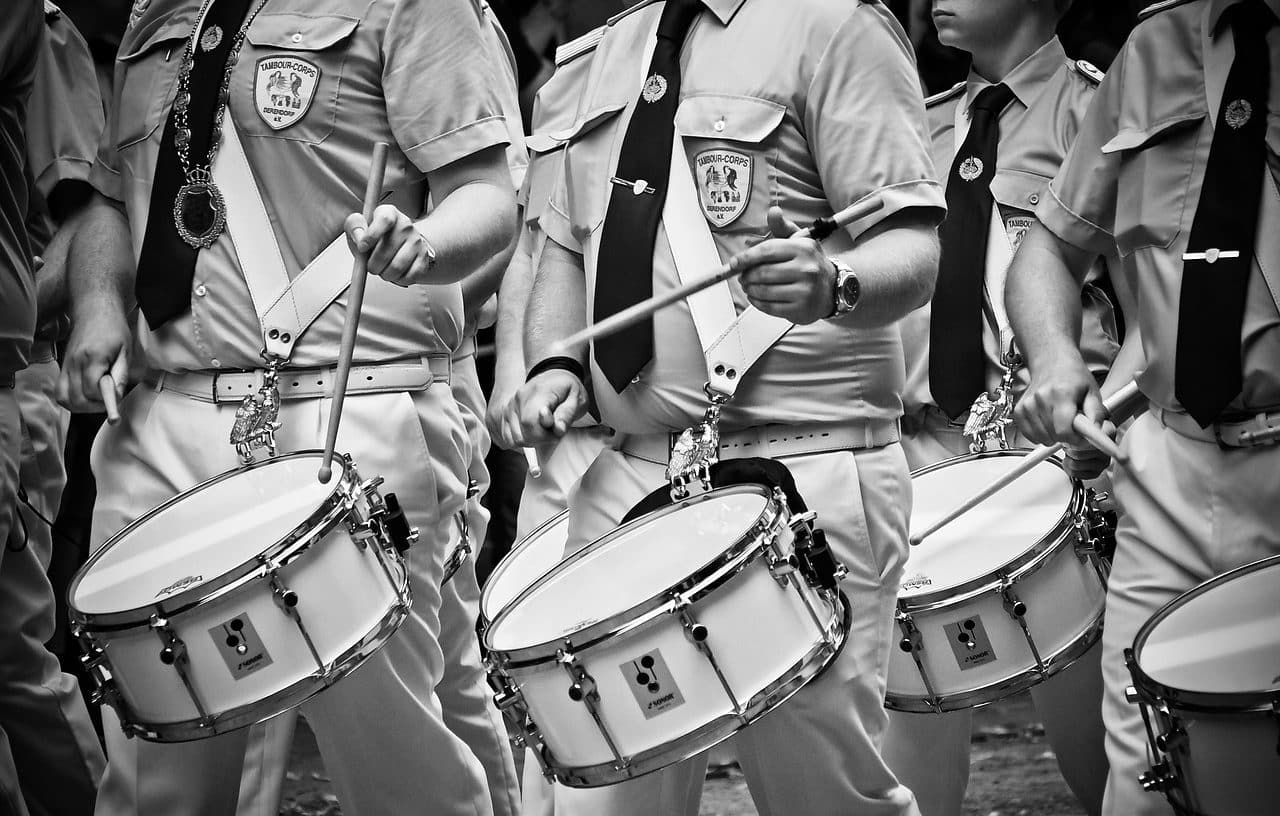
A snare drum is a percussion instrument.
Snare drum is the name given to a percussion instrument also known as a box or snare drum . It is a drum that offers a metallic sound when hit with a drumstick.
The snare drums are made up of a wooden or metal shell , at the base of which are membranes known as heads , made of plastic or leather . To hold the patches, inner rings are used and they are tensioned through metal rods that are adjusted with screws.
Next to the lower head is the snare drum , with threads that vibrate when the upper head is struck. From this vibration, the characteristic sound of the snare drum is obtained. The size of the shell, the angle of the hoops that hold the heads and the materials of the instrument in general are among the factors that determine the sounds .
The drummer's snare drum
The snare drum, also known as the snare drum or snare drum , is the element that gives the snare drum its own timbre , that sound that distinguishes it from the rest and that could be described as a type of hum. Among the most common materials used to make the snare drums (the very threads of the snare drum, which run from one side of the hull to the other) are nylon, gut, metal cable, and crimped wire.
An interesting fact is that if a nearby instrument emits a sound at a certain frequency , the snare drum of the snare drum can begin to vibrate out of sympathy , a concept that describes this chain resonance . So that this phenomenon does not occur against the will of the performer, at a time in which it could threaten the correct execution of a piece, it is necessary to cancel the snare drums.
One of the most used tricks to prevent the snare drums from vibrating out of sympathy is to block their movement with the help of a piece of adhesive tape, which must be stuck on the snare drum near them. Another way is to place a wedge between the head and the snare. Both techniques reduce the impact of this phenomenon.

Military bands often use snare drums.
The heads and the drumsticks
It is important to note that changing the tension of the heads changes the tuning of the snare drum. Typically, opposite screws are tightened alternately so that the entire surface of the patch has the same tension.
Another key element for the sound of the snare drums are the drumsticks or sticks that are used to hit the heads. Today, most drumsticks are made from wood, although there are also plastic drumsticks. The tip of the drumstick, on the other hand, may be coated.
The snare drums and the bands
Snare drums are used in different types of orchestras , highlighting their presence in military bands. Along with the cymbals and the bass drums, the snare drums usually set the rhythm of the march.
Experts advise joining a marching band to improve learning the snare drum and to achieve more precise technique. As with any other instrument, the first step is to tune it correctly, in this case adjusting each lug separately and without pressing too much , until the desired point is achieved.
Historical tour
Regarding the history of the snare drum, we can say that its origins are found in Ancient Egypt , in the Assyrian and Arabian civilizations, where they began to build drums with snare drums on each head, using cat gut.
Around the 14th century , it is known that an instrument called tabor , a drum with two heads and a snare, was used in Europe , which was played with a single drumstick. Its popularity was very notable, since it became the most used drum on the continent, propelled mainly by the Turks and Arabs.
